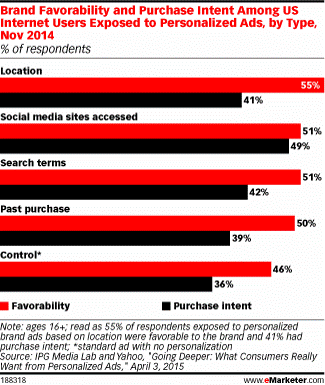Last week it was reported that Google for the first time would allow advertisers to use first-party data to inform search targeting. This has long been something that Google has stayed away from in the search space due to privacy concerns. However, the popularity of Facebook’s Custom Audiences program, Twitter’s Tailored Audiences program, and even Google’s own Remarketing List Ads for Search program has potentially provided the push Google needed. Google has also faced revenue pressure over the past several quarters, as consumers shift to mobile, which continues to have lower CPCs. This leaves Google searching for new ways to increase revenue and the use of first-party CRM data could just be that nugget.
This might work by brands uploading their CRM file to any AdWords account. Google would allow advertisers to match email addresses from Google’s logged-in customers to the email addresses from the brand’s CRM file. This match would allow brands to create a variety of campaign options that would increase the ability to personalize their campaigns.
Here are three ways this change could help search marketers deliver better results for their programs.
1. Increase Customers’ Brand Favorability and Purchase Intent
There are many surveys and data points that show customers desire a more personalized ad experience. This recent data from eMarketer shows that personalized search ads lead to a 17 percent increase in purchase intent. That becomes very meaningful for all brands.

2. RLSAs on Steroids
Today remarketing lists for search ads (RLSAs) are limited to customers who have been to your site through a previous search ad. This CRM targeting would enable advertisers to target users who they have never seen before in search, but are recognized as existing customers. The hit rate goes up significantly. You will be able to bid up or down, opt-out of impressions, customize ad copy, and probably a few other items that really create powerful opportunities to optimize against.
3. Better Ties Between Online and Offline
Using CRM data, which can include credit card information, address, or email information, will be an additional way to help tie the online and offline world. This is a GIGANTIC key to unlocking mobile spend. Today, too many brands shy away from mobile spend because they can’t tie revenue to specific clicks. With the possibilities of using CRM data, this becomes more likely and will really be a great way to understand the full value of the program.
Conclusion
There is so much value in better understanding customer behavior. Any chance that brands and publishers can bring better value from advertisement is fantastic. For search marketers, we have been so focused on keywords as the only way to understand intent. The potential addition of CRM data stands to be very powerful. I hope this comes true and fast.
